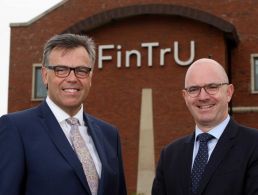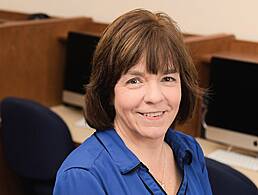On a visit to Accenture’s research and innovation centre, we asked the company’s tech leaders a big question about how emerging technology such as AI might help move the needle on gender diversity and inclusion.
Paul Daugherty, chief technology and innovation officer of Accenture and author of Human + Machine: Reimagining Work in the Age of AI, was in Dublin recently to discuss how our future workplace will change with embedded emerging technologies, and what businesses must do to prepare for this shift. This reflects on what Daugherty and his co-author, H James Wilson, tackle in Human + Machine.
The book jacket is littered with praise from tech and business leaders, with both Microsoft CEO Satya Nadella and Salesforce CEO Marc Benioff describing it as a “roadmap”. Inside, there’s advice on getting started, the new skills required in an AI-driven workplace and how to raise your algorithms right. In this last segment, the book amends the data hygiene mantra for a new age: instead of ‘garbage in, garbage out’, “the more accurate saying would be biases in, biases out”.
This question of bias is what brought Siliconrepublic.com to The Dock, Accenture’s research and innovation space in Dublin’s docklands. I asked Daugherty what he thought of the idea that technology might help eliminate gender bias in the workplace.
“I don’t think technology itself is the answer to eliminating gender bias,” said Daugherty, though he added that technology could have a role to play in how organisations take action on gender imbalance and work to build more inclusive environments.
“Technology is neutral,” Daugherty assured, but “it can help to look at where we might have human bias in decisions and make sure we’re ferreting [it] out.”
It’s the approach that aligns with Daugherty’s roadmap: weed out the bias from the organisation itself and this helps keep it out of the algorithms produced.
Tara Levins, future-workforce lead at Accenture, agreed with this human-centred approach to the optimisation of high-tech development. “It would be great to think that technology could solve gender bias issues but, in reality, technology is only as good as the people who are using it and the people who are training it, so it’s really important to get that right,” she said.
In terms of artificial intelligence in this context, Levins highlighted the importance of putting “guardrails in place to make sure that your technology, your artificial intelligence, your chatbots and everything that you’re using actually is balanced and fair and ethical”.
In all, the Accenture leaders gathered at The Dock saw no silver bullet in technology for defeating gender bias. Head of technology, David Kirwan, concluded: “It would be overly simplistic and almost convenient to assume that AI is going to make the gender challenge we have in the technology space go away.”
However, Kirwan is hopeful that the nature of building these technologies using skills beyond the typically white male-dominated “hardcore coding” and technical architecture creates an opportunity to include a greater variety of people in their development.
“With the adoption of artificial intelligence, the breadth of roles increases hugely,” he said. “Coding is still important but it’s not the be all and end all – there are many other roles that are much more important.”




